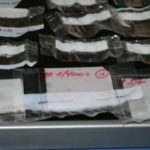Brian McWilliams
Brian completed a short post-doc at The University of Texas Medical Branch for a year after earning his PhD at Baylor College of Medicine in Molecular Virology and Microbiology. He’s currently working in the private sector managing immunoprecipitation and Western blot projects in both product development (R&D) and QA/QC of existing antibodies.
Articles by Brian McWilliams
ELISA (Enzyme-Linked Immunosorbent Assay) is the heartbeat of many labs in the research world, owing to its simplicity and its ability to answer a very basic question: how much of protein/peptide/antibody is in my sample? More specifically, it can be used to answer such questions as: How much IgG is in the serum after I…
Phage display – the process of genetically fusing antibody fragments with phage to identify binding partners to your protein of interest – was covered pretty thoroughly here over the past few months. The success of this assay predicates on creating a diverse library of up to 1012 genes coding for these antibody fragments. Despite being…
Titering Phage – The Plaque Assay Phage display is a molecular technique used to isolate binding or interaction partners to molecules of interest from an extensive library. Such libraries are often derived from the variable regions of native B-cell antibody-binding genes cloned into phage DNA. A single round of phage display panning involves many important steps. However, the…
Mastering basic bacterial culturing practices is a must if you are planning a career in microbiology! Growing bacteria might be one of the easiest things to do as a scientist. Also, as you’ve probably discovered, it’s even easier to do when you’re trying to prevent bacteria from growing where it shouldn’t be!! When we go…
When I was being trained in microbiology as an undergrad, one of the first skills I acquired was the ability to quickly compare and visualize amino acid sequences using BLAST and ClustalW. 15 years later, those two programs have done nothing but improve by expanding the data contained in these databases and simplifying the user…
Like all technical fields, molecular biology contains a very robust “theoretical” realm and an equally robust “practical” realm. Unfortunately, these two existences don’t seem to overlap as often as we’d like. Consider, for example, a simple Western blot. While an antibody interacting with its target on a membrane seems pretty straightforward, there are numerous other…
So let’s just say, hypothetically, that you’re defending your thesis in 2 months and it’s only recently occurred to you that “I really should figure out what I’m doing after grad school.” Or you’re a post-doc whose boss just informed you that they’re interviewing for a position 2 time zones away. Or you’re a technician…
Few things can dash your hopes quite like phages. They can annihilate whole bacteria cultures in the blink of an eye, and make your next cloning or expression project impossible. But you can harness these evil-do-ers for good. And use phages to screen massive libraries of peptides. Learn how below. The Typical “Evil” Phage Experience…
The ELISA (enzyme-linked immunosorbent assay) is arguably one of the most important and versatile tools in the toolbox of molecular biologists, biochemists and diagnosticians across the world. Defined by its simplicity and speed, the assay is easy to learn and perform in as few as five steps. But with so few variables to manipulate, an…







